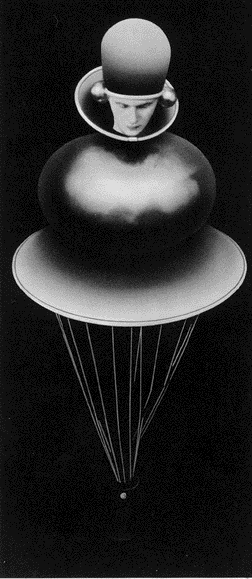



Its choreography derives from the distinct character of each costumed dancer, or figurine in Schlemmer's terms. He analyzed and isolated the primary gestures in the movement of the human body, reduced them to a basic set of elementary forms the ellipse, straight line, diagonal, and circle and designed his costumes and dance steps based upon these forms. Schlemmer's work on this project became the basis for his fundamental-systematizing dances the Form, Gesture, Space, Stick, Scenery, and Hoop dances which he taught at the Bauhaus while in charge of its theater workshop from 1923 to 1929.
<--------------now this way